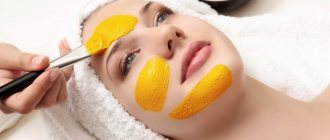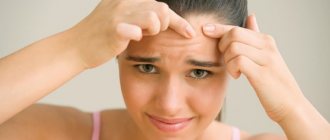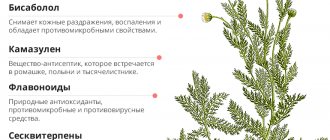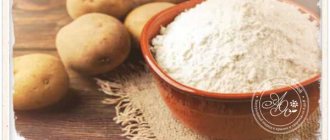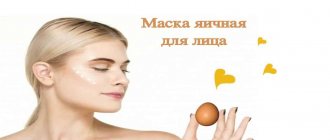A teenager already has mood swings, outbursts of anger or unexpected enthusiasm, a complex mental life and relationship with the world, and then also with the face of the problem. Pimples, redness, blackheads and oily sheen appear. How to deal with temporary problems so that they do not become permanent?
The hormonal background in the period from 12 to 17 years old rearranges the functioning of the entire child’s body in an adult way. Since the skin reflects metabolic processes and signals all the changes occurring inside, it cannot help but react to the level of hormones during puberty.
In developed countries, 50–95% of adolescents suffer from acne. Androgens in a teenager's body stimulate the sebaceous glands to produce more sebum. It “sticks” with dead skin cells, closing the ducts, and cannot come out freely. Bacteria and excess fat remain inside. The body turns on its defense: inflammation begins. The largest number of sebaceous glands are located on the face, chest, back and shoulders. Pimples appear in these areas.
Androgens are produced in both male and female bodies. But in men their level is much higher. Therefore, boys suffer more from acne in adolescence.
Not just age
There are additional factors that can aggravate the situation. The number of acne usually increases several times if:
- there are diseases of the gastrointestinal tract;
- there is a lack of amino and fatty acids;
- malnutrition;
- stress occurs (domestic problems, conflicts);
- weakened immunity;
- incorrectly selected cosmetics;
- the child squeezes out pimples on his own: infection gets into open wounds, an inflammatory process occurs, which provokes the appearance of more and more pimples;
- the child takes medications for a long time.
Even though teenage acne is not life-threatening, it can cause a lot of trouble for teenagers. Such an ordinary disease can negatively affect the future lives of young people: psychological discomfort from “less than ideal appearance” can cause low self-esteem, social alienation and isolation.
The benefits of homemade creams
When using a homemade product, your facial condition will quickly improve. Any woman can choose a recipe depending on the nature of the problem, skin type and her own preferences.
Each of the components of the natural cream directly affects the epidermis. For problematic types, components with drying and anti-inflammatory properties are used.
The benefits of homemade skin creams are undeniable:
- inflammation is quickly eliminated;
- facial tone is evened out;
- large pimples dry out;
- the amount of sebum is normalized;
- the face acquires a healthy color;
- an obstacle is created for the emergence of new acne.
Any homemade cream can be safely applied to pregnant and lactating women. A product prepared independently will not cause any harm to the fetus or baby.
Post-acne
Unfortunately, juvenile acne can leave behind unpleasant consequences called post-acne. At the sites of long-term inflammatory processes in acne, enlarged pores, vascular spots, pigmentation and scars may remain.
The formation of post-acne is promoted by: prolonged course of teenage acne, deep inflammatory elements, squeezing out pimples, late or inadequate treatment.
Do not touch! The main rule of skin care during adolescence is to never squeeze out pimples, blackheads, or other skin growths on your own. This will only worsen her condition.
Scarring after acne remains for life and is a serious cosmetic defect that is difficult to correct only with cosmetic procedures. The only way to prevent these secondary post-acne changes is individual and timely treatment of teenage acne.
Diagnosis of diathesis
In order to make a diagnosis of atopic dermatitis, you must have:
- Allergy burden.
- A typical rash, which is located in typical places.
- A clinical blood test shows eosinophilia (increased levels of cells responsible for allergies).
- An increase in the blood level of allergen-specific IgE antibodies, which also increase with allergies.
- Positive skin tests with allergens (so-called “prick tests”). They are the gold standard in confirming allergies. The essence of the method is that a healthcare worker applies small punctures with allergens to the patient’s skin and evaluates the reaction. If a reaction occurs, the test can be considered positive.
Change menu
Nutrition plays a key role in skin health. Through it, the body removes unnecessary and harmful substances, so the quality and composition of food directly determines how the face will look. Here are a few rules to follow:
Less sweets
If you have skin problems, then the first thing you need to do is limit your consumption of sweets: chocolate, cookies, cakes and other confectionery delights. What did they do wrong? Sweets contain, in addition to flavor enhancers and preservatives, so-called fast, or easily digestible, carbohydrates, which means that after eating the blood sugar level rises sharply, causing a jump in the level of the hormone insulin. Such a jump promotes the activation of inflammatory processes at the cellular level and makes the body more susceptible to various infections. It follows that all traditional sweets contribute to inflammation and create conditions for the appearance of pimples and blackheads.
Let fruits and berries now take the place of the usual sweets in the diet. But here, too, moderation is required, since fruits and berries also contain fast carbohydrates (though without “chemicals”).
Avoid fatty foods
Excess fat obtained by the body from the food eaten is not only stored in the form of extra pounds, but also contributes to an increase in fat content. As a result, the pores through which the skin carries out gas exchange (“breathes”) and also removes harmful substances become clogged, and bacteria multiply in them. You need to make sure that the meat is lean. It’s good to add seafood to your diet and avoid eating smoked sausages and fatty dairy products, including cheeses.
Eliminate what is known to be harmful
Do not abuse fast food, chips, snacks, croutons and crackers. These products contain a lot of salt, spices, flavorings and oils. These ingredients hinder and disrupt the functioning of the intestines and sebaceous glands. You also need to be careful with the use of spices and seasonings (horseradish, sauces, mayonnaise, pepper, mustard). Frequent and abundant consumption of foods rich in essential oils - garlic, onions, radishes - can have a negative effect on the condition of the skin.
It is advisable to avoid spicy food - it affects not only the intestines and liver, but also affects the peripheral nervous system, which, among other things, is also responsible for the regulation of sweat and sebum secretion, as well as the tone of blood vessels.
It is worth taking a closer look at green vegetables and herbs - they are rich in zinc, which regulates the functioning of the sebaceous glands and ensures the normal functioning of the intestines due to their high fiber content.
Drink a lot, but not everything in a row
The best assistant on the path to healthy and beautiful skin is clean drinking still water. You need to drink at least 1.5-2 liters of liquid per day (you can add other drinks, but the majority of this dose should be water). If this is an unusually large amount, then you can simply put a bottle of water next to you and drink small portions throughout the day.
You should be careful with various carbonated and non-carbonated drinks. They usually contain a lot of sugar and a whole list of chemicals (dyes, preservatives, taste improvers, stabilizers). Thus, these “thirst quenchers” deal a double blow - they negatively affect the condition of the gastrointestinal mucosa and lead to the development of skin rashes, allergic reactions and acne, which are nothing more than the body’s attempt to get rid of unnecessary “chemical cargo”.
Among dairy products, it is better to give preference to kefir and live yoghurts. They improve metabolic processes and normalize intestinal flora.
Maintain regularity
The modern rhythm of life dictates its own rules. Many people no longer even notice the lack of breakfast, the replacement of a full lunch with constant snacks throughout the day, and they often overeat at dinner, sometimes just before bed. Problem skin does not tolerate such neglect.
The body requires regular nutrition with three main meals, the last of which no later than 3-4 hours before bedtime. Light snacks if necessary.
But you shouldn’t expect quick results, even if you start eating right and following a normal daily routine. Harmful substances have accumulated in the body for more than one day; it takes time to cleanse the body. Moreover, at first after the introduced changes in diet, it may seem that there is some exacerbation of inflammatory processes on the skin. These are the consequences of enhanced removal of accumulated toxins from the body.
At the age of up to 25 years, the epidermis is completely renewed on average in 21-28 days.
Face cream - the best folk recipes
For the first recipe, simple ingredients in small quantities are suitable. It is recommended to prepare a small portion and test on the skin. If you don’t like something, you can always make an “addition”.
The simplest recipe for “Honey Cream”
How to make cream quickly from improvised materials? The simplest and most effective recipe includes only 3 components:
- 1 tsp. honey;
- 1 tsp. olive oils;
- 0.5 tsp. propolis tinctures.
Melt the honey if it is candied. We carefully combine all the components, mixing with a wooden stick or spatula. It is convenient to draw the resulting cream into a syringe and squeeze out the amount required for application. Store in the refrigerator for about a month. Propolis tincture is a natural preservative.
Acne cream “Honey calendula”
Tincture of calendula with alcohol very effectively dries out acne and eliminates inflammation. The resulting mixture is stored in the refrigerator for a month. Ingredients:
- 1 tsp. honey;
- 0.5 tsp. calendula tinctures;
- 3 drops of natural preservative;
- 5 drops of oily vitamin A;
- 5 drops of oily vitamin E;
- 0.5 tsp. olive oil.
Mix all ingredients in a small bowl with a wooden spatula. We put the cream into a syringe and store it in the refrigerator. In case of severe inflammation during the day, you can apply spot-on pimples no more than three times a day.
Almond cream with rosemary
Cream with beeswax will help get rid of acne. This component is a preservative, so the product can be used within 3-4 weeks. Rosemary oil effectively fights acne. You will need:
- 1 tsp. beeswax;
- 0.5 tsp. shea butter;
- 0.5 tsp. coconut oils;
- 1 tsp. almond oil;
- 3 drops of vitamin E;
- 3 drops rosemary essential oil.
Measure shea, coconut and almond butters into a small container. Melt the wax in a water bath and remove from heat. Quickly pour the oils into the wax and stir until smooth.
Cool the cream to room temperature. Add vitamin E and essential oil to the mixture and stir. Pour into a jar and store in the refrigerator. We scoop up the product with a spatula so as not to introduce germs into it from our hands. Can also be stored in a syringe.
It is imperative to test all products, especially multi-component ones, before first use. Any of the ingredients may cause an allergic reaction.
Cream for teenage pimples with glycerin
The product according to this recipe practically does not cause allergic reactions, so it is suitable for most people with problem skin. The resulting cream can be stored in the refrigerator for no longer than a month. Ingredients for preparation:
- 0.5 tsp. purified beeswax;
- 1 tsp. peach kernel oils;
- 0.5 tsp. glycerin;
- 3 drops grapefruit seed extract.
Melt the purified white wax and mix with oil and glycerin. Cool the cream until warm, add grapefruit tincture, stir. Pour into a jar.
Proper care
Skin care for acne is a daily ritual, all stages of which must be learned, not confused or skipped. You need to wash your face twice a day with warm water. Avoid soap and use special products for oily skin for cleansing (better ─ gels and foams). After washing, use lotion or tonic - they prepare the skin for applying cream, disinfect and dry, tighten pores, and have a mattifying effect. The final stage is a special cream for oily and problem skin.
In the active stage of acne, the use of decorative cosmetics is not advisable, but during “quiet” periods the skin is quite tolerant of makeup. The main thing is that it is light and has few layers. When choosing products, you need to pay attention to the packaging: the “non-comedogenic” label is required. Concealing treatments with pigmented particles that even out skin tone will add calmness and confidence.
Tonic recipes
It is necessary to wipe your face with toner before applying the cream. It tightens pores, cleanses, and nourishes the skin with beneficial microelements. The liquid according to any of the described recipes can be turned into cosmetic ice by pouring into molds and freezing.
Universal tonic with chamomile
Suitable for problematic and healthy skin. Can be stored in the refrigerator for 3-4 weeks. Rubbing your face daily with chamomile toner will quickly cleanse problem skin. For preparation:
- 1 tbsp. l. dry chamomile;
- a glass of purified water;
- 5 drops of “green” preservative.
Pour chamomile with water, put on fire and boil for 5 minutes. Strain and cool completely. Add grapefruit seed extract, stir, pour into the bottle.
Bay toner for severely inflamed skin
Bay leaf is a “grandmother’s” ingredient for getting rid of acne on the face. The product actively disinfects the skin, eliminating most pimples within a week of use. After a month of use, there will be no need for foundation or powder. The product also controls sebum production. You will need 10 large bay leaves, a glass of purified water, 5 drops of natural preservative.
Pour water over the leaves and boil for 5 minutes. Remove the bay leaf and cool the broth. Add grapefruit extract, stir, pour the tonic into the bottle.
Treatment according to instructions
To the question “what will help with acne?” there is no clear answer. It is difficult to single out the main “anti-acne” components: good treatments contain a complex combination of active substances. And yet there are ingredients that are better to remember (and check on occasion for yourself and your specialist):
Anti-inflammatory
: linoleic acid, niacinamide, allantoin, zinc salts, azelaic acid, extracts of tea tree, sage, chamomile, witch hazel, aloe vera.
Antibacterial
: piroctone olamine, glycasil, sulfur, plant extracts of calendula, chamomile, green tea, burdock, essential oils of tea tree, lemon, clove.
Keratolytic
(softening and exfoliating): ANA and BHA acids, retinoids, glycasil, azelaic acid, sulfur, bromelain, bodyaga.
Sebum regulators
: retinoids, linoleic acid, azelaic acid, extracts of green tea, pumpkin, burdock, cedar.
Matting
: aluminum and calcium salts, perlite, clay, kaolin, silicon.
Pharmacy brands undergo careful monitoring under the supervision of dermatologists and are prescribed by doctors, therefore they are preferable for caring for problem skin.
In addition to proper care and corrective drug treatment, beauty salons will be happy to offer a number of procedures to improve the condition of the skin. Which of them will be effective (for example, facial cleansing - mechanical or ultrasonic, various peelings) will be determined by a specialist during a consultation, taking into account the condition of the teenager’s skin.

